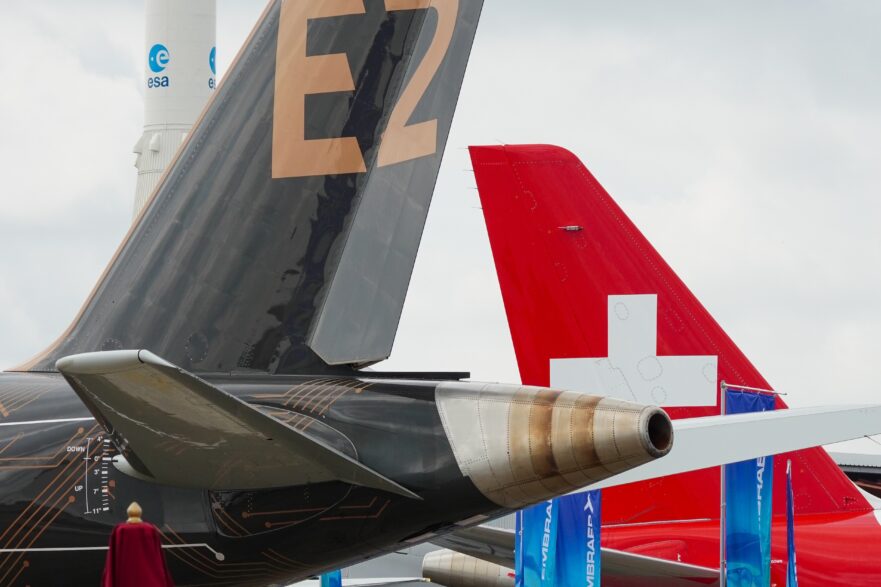Fundamentally, even with this new shape, Embraer’s tentatively designated TPNG 70 and TPNG 90 (Turboprop Next Generation) haven’t changed in their overall mission. The aircraft is still a 70 to 90-seat turboprop with a range “a little bit more than 800 nautical miles” but optimized for flights between 250 and 300 nautical miles and flown at speeds “faster than an ATR, but not as fast as the Dash 8-400,” said Souza, putting its cruising speed between 300 and 360 knots. Embraer’s goal is a 15% to 20% improvement in cash operating costs for its bigger TPNG 90 compared to the ATR 72-600.
With this evaluation for its turboprop concept, Embraer is scratching at an entirely new strategic consideration for a multi-decade aircraft program. While large aircraft design has relied on the same fundamental type of fuel, coupled with successive generations of ever-improving engines, Embraer views its new 90-seater airframe as propulsion agnostic and a halfway step toward hydrogen. Positioning the engines on the rear of the aircraft might not produce the single most optimized design in 2027, but, in Embraer’s view, that deliberate non-optimization allows room for future evolution and growth.
As it prepares to fly a hybrid-electric demonstrator in 2024, De Havilland Aircraft of Canada says it’s all about designing an aircraft for a bad day.
A pilot shortage is shaping the debate over single-pilot cockpits, while Airbus CEO grabs aviation’s third rail with both hands.
Jon Ostrower and Elan Head·
Sign up to receive updates on our latest scoops, insight and analysis on the business of flying. (function($) {window.fnames =...
Brazil’s thrice-elected president, Luiz Inácio Lula da Silva, is slated to meet with China’s leader Xi Jinping on April 14, in a pivotal visit between the nations with a potentially profound impact on western aerospace.
Log-in here if you’re already a subscriber Release DateNovember 16, 2023Embraer enters ‘harvest season' after decades of unceasing developmentPurchase a...
Log-in here if you’re already a subscriber HEAR FROM THE AIR CURRENT Leave this field empty if you're human: Release...








